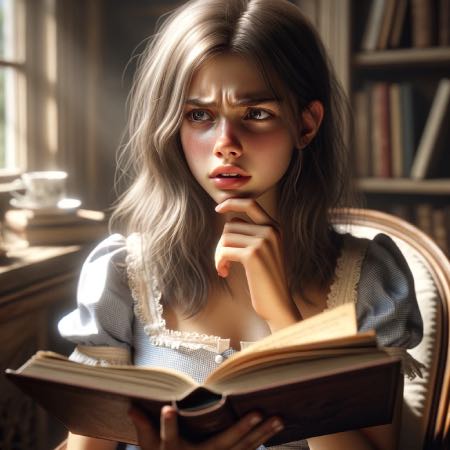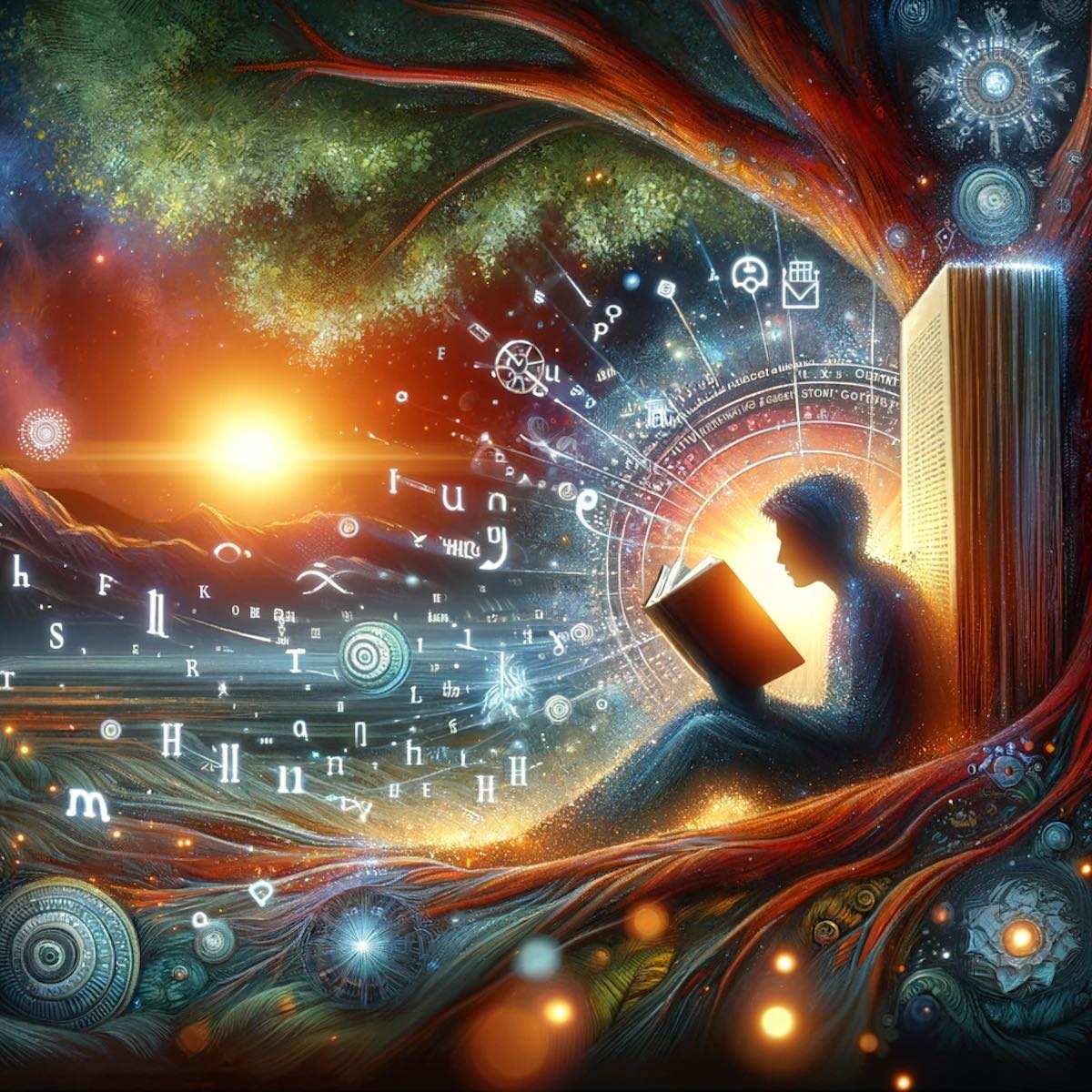[su_label type=”black”]Bookworm’s Notebook[/su_label]
[su_box title=”Key Takeaways” style=”soft”]
[su_list icon=”icon: check” indent=”4″]
- Literary fiction is a distinct genre characterized by its emphasis on character development, intricate storytelling, and exploration of universal themes. Unlike popular fiction, which focuses on plot-driven narratives, literary fiction delves into the psychological depth of its characters and often challenges preconceptions, provoking intellectual and emotional responses from readers.
- Key Elements of Literary Fiction:
– Rich prose and meticulous use of language
– Nuanced exploration of characters’ inner lives
– Thought-provoking themes
– Emphasis on the human condition - The genre is known for its eloquent prose and artistic sensibility, often employing complex sentence structures and sophisticated terminology. Literary fiction also frequently uses symbolism and metaphor to add layers of meaning, inviting readers to engage in deeper analysis.
- Notable works in literary fiction include Middlemarch by George Eliot, Ulysses by James Joyce, The Sound and the Fury by William Faulkner, Under the Net by Iris Murdoch, and Stoner by John Williams. These classics contribute to the genre’s rich history and exemplify its defining characteristics.
[/su_list]
[/su_box]
Literary fiction stands as a distinct genre within the vast scope of literature. It encompasses a unique set of characteristics that set it apart from other genres, particularly those regarded as popular or contemporary fiction.
In this article, we will explore the literary fiction genre in all its intricacies. We will delve into the defining characteristics that set it apart from other genres while examining notable works that have left an indelible mark on literature as a whole.
What is literary fiction?
To begin with, it is essential to define what precisely constitutes literary fiction. However, understanding the unique characteristics of a literary genre can be a challenging task, as it encompasses a broad range of works that defy simple categorization.
Frequently, the profundity and complexity of a fictional work are ascribed to its “literary” status. In contrast to narratives propelled by plot, literary fiction typically places greater emphasis on character development, intricate storytelling, and the examination of universal themes. It frequently provokes deep intellectual and emotional reactions from its readers, transcending the realm of “mere entertainment” in its quest to delve into the profound depths of human experiences and emotions.

Literary fiction is also renowned for its eloquent prose and meticulous use of language. Literary works frequently display a writing style that transcends simple narrative construction, embodying an artistic sensibility and handiwork.
A work of fiction can be considered literary when it exhibits qualities such as rich prose, nuanced exploration of characters’ inner lives, thought-provoking themes, and an emphasis on exploring the human condition. These elements often challenge readers to reflect on themselves and the world around them.
However, it’s important to note that there is no definitive checklist or formula for determining whether a work of fiction falls into the category of literary fiction. Different readers may have varying interpretations of what constitutes literary merit in a piece of writing. Ultimately, it is up to individual readers and critics to engage in thoughtful analysis and discussion when defining literary fiction.
Elements that Define Literary Fiction
While there may not be a definitive definition for literary fiction, it is generally recognized as a form of storytelling that transcends entertainment value alone. It strives to create an impact through its artistic expression and intellectual engagement with readers.
One of the key characteristics of literary fiction lies in its emphasis on depth and complexity. It explores the intricate psychological terrain of its characters, delving into their inner thoughts and motivations. This genre often challenges established norms and conventions, inviting readers to question their own beliefs and values.
Defining what constitutes literary fiction can be subjective and open to interpretation. However, there are certain characteristics that are often associated with this genre. A work of fiction can be considered literary if it exhibits a high level of craftsmanship in terms of language, style, and structure. It goes beyond mere storytelling to delve into deeper psychological insights or social commentary.
The Role of Language and Writing Style in Literary Fiction
In literary fiction, language serves as a powerful tool to convey emotions, evoke imagery, and establish the tone of the narrative. Whether it’s the use of vivid descriptions or carefully crafted metaphors, every word carries weight in shaping the reader’s understanding and connection to the story.
The choice of words, sentence structure, and even punctuation can contribute to the overall mood of the narrative. In literary fiction, the prose is often elevated with an emphasis on rich imagery, metaphorical language, and nuanced descriptions. This attention to detail creates an immersive reading experience that allows readers to fully engage with the story’s world.

Furthermore, writing style in literature goes beyond mere storytelling. It encompasses elements such as prose, which refers to the way sentences are structured and paragraphs are formed. A distinctive writing style can elevate a piece of literature from ordinary to extraordinary.
It is through the careful selection and arrangement of words that authors are able to create vivid worlds, evoke emotions, and captivate readers. A skilled writer knows how to manipulate language to convey a particular emotion or create a specific effect on the reader.
Complex Themes and Character Development
Another distinguishing element of literary fiction is its focus on character development over plot progression. While plot-driven narratives may prioritize action-packed events or twists, literary fiction places greater emphasis on exploring the internal struggles and growth of its characters. This deep dive into human nature allows for a more introspective exploration of universal themes such as love, loss, identity, and existentialism.
Readers are no longer satisfied with one-dimensional characters who simply serve as plot devices. Gone are the days when readers would settle for archetypal heroes or villains; now they yearn for characters who exhibit flaws and vulnerabilities, allowing them to connect on a deeper level. Psychological realism demands that authors explore the intricacies of human behavior, showcasing both the light and dark aspects of our nature.
Characterization in literature has evolved beyond superficial descriptions and actions. It now delves into the intricate workings of the human mind, exploring motivations, desires, fears, and contradictions. Authors are challenged to create characters that reflect the complexities of real people, capturing their psychological depth in a way that feels authentic and relatable.
The importance of realistic portrayal extends beyond mere entertainment value. It allows readers to gain insights into themselves and others, fostering empathy and understanding. By presenting characters with genuine psychological depth, authors have the power to provoke introspection and challenge society’s traditional beliefs.
However, achieving such levels of characterization is no easy feat. It requires meticulous observation of human behavior coupled with a deep understanding of psychology. Authors must masterfully weave together external actions with internal thoughts and emotions to create fully-formed individuals.
Symbolism and Metaphor
Symbolism is another aspect closely tied to language and style in literary fiction. Authors often use symbols to represent abstract concepts or evoke specific emotions. By decoding these symbols, readers can unravel deeper layers of meaning that enhance their appreciation of the work’s thematic significance. It is through careful analysis and interpretation that we can uncover the layers of symbolism and metaphor embedded within these works.
Symbolism adds layers of complexity to the narrative, inviting readers to delve into hidden depths and interpret various levels of meaning through metaphorical language and imagery. In order to truly explore symbolism and metaphor in literary fiction, one must have a deep understanding of literary theory and techniques. It requires careful examination of the author’s intentions, the cultural context, and the potential impact on readers.
Subtext analysis goes beyond what is explicitly stated in the narrative, seeking to decipher hidden meanings and intentions. It involves examining the subtle cues, gestures, dialogue choices, and narrative techniques employed by authors to convey their ideas indirectly. By exploring subtext, readers can gain a richer understanding of character motivations, interpersonal dynamics, or societal critiques present in the text.
It is important to note that not all stories contain explicit symbolism or metaphors. Some works may focus more on plot or character development than exploring deeper meanings. Therefore, it is crucial for readers and critics alike to discern whether an author intends to convey symbolic messages or simply entertain with an engaging narrative.
Plot Structure and Narrative Devices
Narrative devices also play a significant role in literary fiction. Authors employ various techniques, such as foreshadowing, flashbacks, or stream-of-consciousness narration, to add depth and complexity to their stories. These techniques not only engage readers but also allow for different perspectives and layers of meaning within the narrative.
It is worth noting that not all narratives follow a conventional linear structure. Unconventional plot devices and nonlinear storytelling techniques have gained popularity in recent years, challenging traditional narrative structures. Authors are experimenting with different ways to present their stories, often incorporating flashbacks, multiple perspectives, or fragmented timelines.
While these unconventional approaches can add depth and complexity to a story, they can also be polarizing for readers. Some may find them refreshing and intellectually stimulating, while others may feel confused or disconnected from the narrative.
It is important for authors to strike a balance between innovation and accessibility when employing these narrative devices. The purpose should not solely be to impress or confound the reader but rather to enhance the themes or explore new perspectives within the story.
Whether following a traditional linear structure or embracing unconventional techniques, authors must ensure that their choices align with the overall vision of their work and effectively engage their readers.
Why is literary fiction perceived as difficult?
Literary fiction has long been associated with a sense of difficulty, often perceived as a genre that is challenging to read and comprehend. This perception stems from various factors that contribute to its reputation as being inaccessible to ordinary readers.

Literary authors often use complex sentence patterns, sophisticated terminology, and multi-layered narratives that require careful attention and interpretation. To properly understand the intended meaning of the work, readers may need to apply critical thinking and in-depth analysis to certain parts.
Apart from its lush language and utilization of techniques such as allegories, metaphors, and allusions, literary fiction often incorporates complex plot lines, nuanced character development, and abstract concepts—all of which can occasionally be overwhelming. Linguistic devices such as these introduce additional layers of meaning, which can pose difficulties for readers lacking the ability to decipher their symbolic implications.
Another contributing factor is the expectation placed on literary fiction by academia and critics. The emphasis on critical analysis and interpretation in academic settings can create a sense of intimidation for readers who are not accustomed to approaching literature from an analytical perspective.
However, it is important to note that perceiving literary fiction as difficult does not necessarily mean it is inaccessible or unenjoyable. While it may require more effort from readers in terms of concentration and interpretation, engaging with challenging literature can also be intellectually stimulating and rewarding.
Ultimately, the perceived difficulty of reading literary fiction should not discourage individuals from exploring this genre. With an open mind, patience, and a willingness to embrace complexity, readers may discover a rich world of thought-provoking stories that offer unique insights into the human condition.
Literary Fiction vs Popular Fiction
Distinguishing between the literary fiction genre and popular fiction involves recognizing the varying goals that each genre seeks to achieve: entertainment versus artistic exploration. While both genres serve the purpose of entertaining readers, they differ significantly in terms of their artistic merit, depth of themes, and writing style.
While popular fiction aims to entertain a broad readership with fast-paced plots and relatable characters, literary fiction seeks to provoke introspection and stimulate critical thinking through its exploration of complex themes, intricate character development, and thought-provoking narratives. Unlike popular fiction, which often focuses on entertainment and mass appeal, literary fiction prioritizes artistic expression and intellectual engagement over commercial success.
The distinction between literary and popular/commercial fiction lies not only in their goals but also in their intended readers. While commercial fiction seeks mass appeal by catering to popular tastes and trends, literary works target readers who crave intellectual stimulation and a deeper understanding of the human experience.
Understanding the significance of literary fiction goes beyond its artistic value, however. It serves as a reflection of society’s collective consciousness, providing insights into cultural norms, historical contexts, and philosophical inquiries. Through its nuanced storytelling techniques and exploration of universal truths, literary fiction has the power to inspire empathy and foster intellectual growth.
Furthermore, it is crucial to acknowledge that not all works labeled as “literary fiction” possess these qualities. The term itself can be subjective and open to interpretation. Therefore, it is imperative for readers and critics alike to discern between true literary works that push boundaries and those that merely imitate the form without substance.
Examples of Classic Fiction with Literary Tone
The literary fiction genre has been shaped and influenced by numerous classic novels as well as contemporary fiction, with their talented authors behind them. What follows are just a few of these examples.
- Middlemarch (1871–1872) by George Eliot is a monumental piece of fictional literature renowned for its intricate character development and examination of Victorian England’s social and moral issues. It offers a panoramic view of society by interweaving the stories of numerous characters in a small town, which has become its defining characteristic.
Eliot’s narrative style is distinguished by its psychological profundity and realism; through the use of the omniscient point of view, the reader is granted insight into the characters’ innermost thoughts and motivations. This method imbues the characters and their interactions with greater complexity, rendering them exceedingly tangible.
The novel’s enduring significance stems from its adeptness at encapsulating the subtleties of human nature and social interactions; as such, it constitutes a timeless investigation into the human condition.
- Ulysses (1922) by James Joyce is an exceptionally daring and experimental piece of literary fiction that brought about a paradigm shift within the modernist movement. The novel is renowned for its innovative storytelling approach and utilization of the stream-of-consciousness technique—a literary style that effectively engrosses the reader in the thoughts and perceptions of its characters through a fragmented and nonlinear progression of events.
The novel explores themes of identity, sexuality, and the nature of reality. It takes place over the course of a single day in Dublin, following the lives of its characters as they navigate the city.
Its linguistic experimentation and innovative narrative structure have significantly influenced the evolution of literary fiction, expanding the limits of form and style that are deemed feasible. Additionally, Joyce’s scrupulous focus on language and wordplay enhances the novel’s standing as a seminal piece of modernist literature.
- The Sound and the Fury (1929) by William Faulkner is a modernist novel that challenges traditional notions of narrative structure and chronology. The novel tells the story of the Compson family from multiple perspectives and through a fragmented timeline. Faulkner’s exploration of memory, time, and the decline of the Southern aristocracy is considered a significant contribution to the genre of literary fiction.
The novel is divided into four sections, each narrated by a different character, including one with limited mental capacity. Faulkner’s use of stream-of-consciousness and nonlinear storytelling creates a fragmented and disorienting narrative, reflecting the characters’ fragmented and distorted perceptions of reality.
The profound literary impact of the novel lies in its exploration of the human psyche and its innovative narrative techniques, characterized by shifting perspectives and nonlinear storytelling, which have influenced subsequent generations of writers. - Under the Net (1954) by Iris Murdoch is an exceptional work of literary fiction due to its distinctive fusion of comedic and engaging storytelling with philosophical investigation. It is distinguished by its astute, first-person narration that skillfully blends comedic elements with philosophical musings.
The novel follows the adventures of Jake Donaghue, a young, intellectual drifter and aspiring writer, whose misadventures in London form the crux of the plot. Jake’s journey is not just a series of comic escapades; it is also a quest for authenticity and understanding in a post-war world that seems increasingly absurd and disconnected.
Murdoch, a philosopher herself, delves into how language can both reveal and obscure truth. The novel questions whether true communication is ever possible and explores the limitations of language in conveying reality. - Stoner (1965) by John Williams, though not immediately recognized upon its publication, has gradually emerged as a significant work in literary fiction, especially noted for its deep and poignant exploration of an ordinary life. The novel’s resurgence in popularity is a testament to its understated power and emotional resonance.
The story is a deceptively simple one, centered on the life of William Stoner, a university professor in Missouri. Unlike typical literary heroes, Stoner leads an unremarkable existence. He faces professional disappointments, marital struggles, and personal disillusionments.
However, it’s precisely in this portrayal of an ordinary life, with its quiet joys and enduring sorrows, that the novel’s true beauty lies—the character development in “Stoner” is subtle yet profound. The novel’s power lies in its ability to find significance and depth in the routine and the everyday, offering a counterpoint to the notion that a life must be extraordinary to be worthy of literary attention.
In addition to these classics, authors like Ernest Hemingway, F. Scott Fitzgerald, Virginia Woolf, and Toni Morrison have also made significant contributions to the literary fiction genre. Their works delve into complex human emotions, societal issues, and philosophical questions that continue to resonate with readers today.
Literary fiction is constantly evolving, with new trends and voices emerging in the genre. One notable trend is the increasing diversity of perspectives and voices represented in contemporary literary fiction. This shift reflects a growing recognition of the importance of diverse storytelling and the desire to explore experiences beyond the traditional canon.
Contemporary literary fiction writers are embracing a range of perspectives, including those from marginalized communities, underrepresented voices, and different cultural backgrounds. This infusion of diverse voices brings fresh narratives and unique storytelling techniques to the forefront.
However, while these trends may be seen as positive steps towards inclusivity and innovation, there is also a need for critical examination. It is crucial to ensure that diversity in literature goes beyond token representation and truly allows for authentic voices to be heard. Additionally, as experimentation with narrative structures becomes more prevalent, it is essential for writers to strike a balance between innovation and coherence to avoid sacrificing readability for the sake of novelty.
Further Reading
What is Literary Fiction, Anyway? by Annika Barranti Klein, Book Riot
What Was Literary Fiction? by Dan Sinykin, The Nation
Why You Should Read More Literary Fiction by Violet Daniels, Medium
Literary Fiction is a Genre: A List by Edan Lepucki, The Millions
On Literary Fiction, and Literary Snobbery by Michelle Shakespeare, The Literary Consultancy





